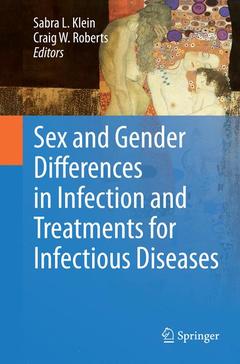Description
Sex and Gender Differences in Infection and Treatments for Infectious Diseases, 1st ed. 2015
Coordinators: Klein Sabra L., Roberts Craig W.
Language: English
Subjects for Sex and Gender Differences in Infection and Treatments...:
Support: Print on demand
Description
/li>Contents
/li>Comment
/li>
This book provides an overview of the underlying sex-based and hormone-based differences in immunity, wound healing and pharmacokinetics, while also exploring how pregnancy affects immunity. The second part of the book shows, for the first time in a single volume, the growing number of infectious diseases for which sex and gender differences are noted, identifies common as well as distinct mechanisms mediating these differences and illustrates how responses to treatments might differ between the sexes. The awareness that males and females differ in their response to specific pathogens as well as to treatments for infectious diseases may yield sex-specific personalized treatments. This book will be of interest to basic scientists and clinicians in the fields of microbiology, immunology and pharmacology. Individuals working in academia, government and industry will also benefit from the information presented.
First book giving a condensed overview to infectious diseases for which sex and gender differences are noted
Clearly shows how responses to individual treatments may differ between the sexes
Illustrates the need for personalised medicine in treatment of infectious diseases
These books may interest you

Primates, Pathogens, and Evolution 158.24 €

Primates, Pathogens, and Evolution 158.24 €


